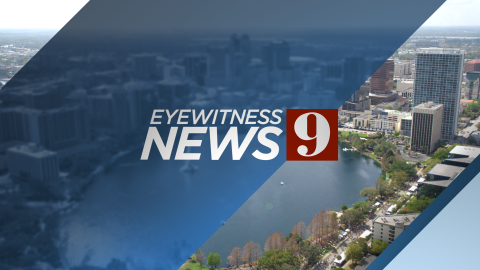SEMINOLE COUNTY, Fla. — Eric Fiedler watched as a man drove his unmarked van onto the grass along Maitland Avenue and took out a long black pole with a camera attached to it.
▶ WATCH CHANNEL 9 EYEWITNESS NEWS
“It just seemed really curious,” Fiedler said. “It sent me down a rabbit hole.”
Fiedler would later find out the pole, camera and accompanying solar panel was a Flock license plate reader (LPR), which takes a picture of every passing car and uses AI technology to identify the car by its plate number, color, model, bumper stickers and dents.
The pair that got planted on Maitland Avenue that day was one of an unknown number of LPRs installed across the county over the last month, feeding into a central database accessible to deputies.
Exactly how many cameras have been erected remains a secret outside the sheriff’s office, which won’t disclose the number or their locations for “intelligence purposes.”
Read: License plate readers: How much personal data does your license plate reveal?
“They are widely used by law enforcement with a goal of locating missing and endangered persons, stolen cars and tags, and felony suspects,” SCSO spokesman Bob Kealing wrote in an emailed response to WFTV’s list of questions. “The purchase and installation of LPRs are publicly approved by the county commission.”
A county spokesman referred questions about the LPRs back to the sheriff’s office.
Seminole County commissioners did approve the installation of 25 LPRs during its March 28, 2023 meeting in a no-discussion consent vote. The program was intended to last for one year and came at no cost to taxpayers. It’s not clear if that one-year program is still underway or if additional cameras were purchased after it expired.
Read: Man accused of killing maintenance worker at Sanford Islamic center will not face trial
As a part of the pitch written into the publicly available packet that commissioners reviewed, sheriff’s office staff said the existing LPRs the agency had – plus those owned by surrounding agencies – had been a game changer for law enforcement in their efforts to catch criminals.
The examples included the apprehension of a murder suspect who killed a Husseini Islamic Center employee in March of 2022 within three hours of the call, and the capture of a Volusia County murder suspect in April of 2021.
The sheriff’s office also said they’ve used them to solve property crimes and missing persons cases.
Read: Sanford police use new technology to catch criminals
The new cameras have prompted several discussions as users posted photos of the unfamiliar objects on social media sites. While the LPRs received support from many members of the community, Fiedler and others say the lack of transparency about their installation and the overall nature of the program felt like a step toward “big brother.”
“When you realize you’re being tracked every day going to the grocery or the church or the school, and you didn’t have any say in it. It’s a little concerning to me,” Fiedler said, while acknowledging his phone tracked his movements and he had no right to privacy on a public street. “At what point would you just put on a GPS bracelet and say, you can track me everywhere I go, you can see everything I buy?”
Flock, which has previously interviewed with WFTV about its LPR systems, said all its data is encrypted and deleted after 30 days. Seminole County owns all the data, and only deputies can access it for official law enforcement purposes.
Read: Cabana Live was not allowed to operate as an event venue, Seminole County Officials say
A spokeswoman said their systems now help law enforcement solve 9% of all crimes in the US.
“There’s a call for better policing, more objective policing,” the spokeswoman said. “[The LPRs] provide that objective evidence.”
County leaders say deputies can only access the system with an investigative case number, and the system is monitored and audited for abuse. Anyone caught misusing the data would lose access to it.
LPRs have been in place since the early 2010′s and can now be found in most jurisdictions. Some jurisdictions like Sanford – an early adopter of the technology – have been much more transparent about their installation.
For Fiedler, he said he worries about what will come next.
“It would be very simple to take a camera like what we have behind us and put on a radar on it,” he explained, rehashing the amount of data the LPR already captures. “Maybe it could go into your to how insurance approaches your premium… if you have a political sticker that’s supporting one party, theoretically, they could know and it could influence things.”
Click here to download our free news, weather and smart TV apps. And click here to stream Channel 9 Eyewitness News live.
©2024 Cox Media Group








